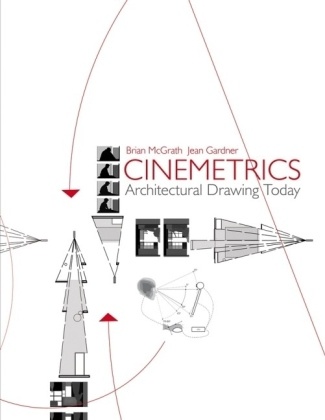Read more
Informationen zum Autor Brian McGrath is an architect and co-founder of urban-interface, which explores relationships between urban design, ecology and multi-media. McGrath teaches at Columbia and Parsons in New York City and Chulalongkorn University in Bangkok. He was a Senior Fulbright Scholar in Thailand in 1998/99 and is currently a co-investigator with the Baltimore Ecosystem Study and is a New School Faculty Fellow with the India China Institute. Jean Gardner is Senior Faculty, Department of Architecture, Interior Design and Lighting, Parsons. Her course 'Issues and Practices in Architecture and Urbanism' received special recognition in the 2005 National AIA Ecological Literacy Initiative. Co-chair of the ACSA Task Force on Sustainable Design, she helped organise 'Sustainable Pedagogies and Practices', the 2003 ACSA/AIA Teachers' Seminar. With The Rockwell Group, she exhibited 'the Hall of Risk', 2002 Venice Biennale. Klappentext This is the first textbook for architectural drawing with the computer that is based on understanding how digital drawing fundamentally differs from drawing with lead pencils on drafting boards. Cinemetrics: Architectural Drawing Today demonstrates a cinematically-inspired, cybernetically imaged, architectural drawing system for thinking about architecture as embedded in relationships within the world at large. It opens up the possibility of inventing new ways of building as framing flowing matter in order to live a philosophy of ?newness?. The authors, who have for fifteen years collaborated in teaching architectural students, link the architectural drawing text with research in the expanded field of architecture, which includes neurology, biology, ecology, physics, sustainability and philosophy. The book is written in an accessible and direct tone. Providing both an understanding of the visual perception behind drawing and practical exercises, it is set to become the key text book on the subject at both undergraduate and graduate level. It is highly illustrated with black and white diagrams and drawings. Zusammenfassung This is the first textbook for architectural drawing with the computer that is based on understanding how digital drawing fundamentally differs from drawing with lead pencils on drafting boards. Inhaltsverzeichnis INTRODUCTION LOSING PERSPECTIVE, FINDING DURATION. What happens when architectural drawing leaves the drawing board and moves to the computer screen? CHAPTER 1 FRAMING. What happens when movements are not in space and images not in our brains? CHAPTER 2 IMMOBILE CUTS. How can we develop an architectural drawing system fro the intervals in matter-flux? CHAPTER 3 SHOOTING. What happens when we relate movement, not to privileged poses, but to any-instant-whatever? CHAPTER 4 MOBILE SECTIONS. How can we generate architectural spaces through drawing any-instant-whatever? CHAPTER 5 ASSEMBLING. What happens when the sensori-motor schema breaks down and perceptions no longer result in action? CHAPTER 6 CYBERNETIC SEEDS. How can we generate space as seeds of different worlds in the making? POSTSCRIPT PROLOGUE TO WHAT IS POSSIBLE. Keywords. Bibliography. Index. ...
List of contents
INTRODUCTION LOSING PERSPECTIVE, FINDING DURATION.
What happens when architectural drawing leaves the drawing board and moves to the computer screen?
CHAPTER 1 FRAMING.
What happens when movements are not in space and images not in our brains?
CHAPTER 2 IMMOBILE CUTS.
How can we develop an architectural drawing system fro the intervals in matter-flux?
CHAPTER 3 SHOOTING.
What happens when we relate movement, not to privileged poses, but to any-instant-whatever?
CHAPTER 4 MOBILE SECTIONS.
How can we generate architectural spaces through drawing any-instant-whatever?
CHAPTER 5 ASSEMBLING.
What happens when the sensori-motor schema breaks down and perceptions no longer result in action?
CHAPTER 6 CYBERNETIC SEEDS.
How can we generate space as seeds of different worlds in the making?
POSTSCRIPT PROLOGUE TO WHAT IS POSSIBLE.
Keywords.
Bibliography.
Index.

